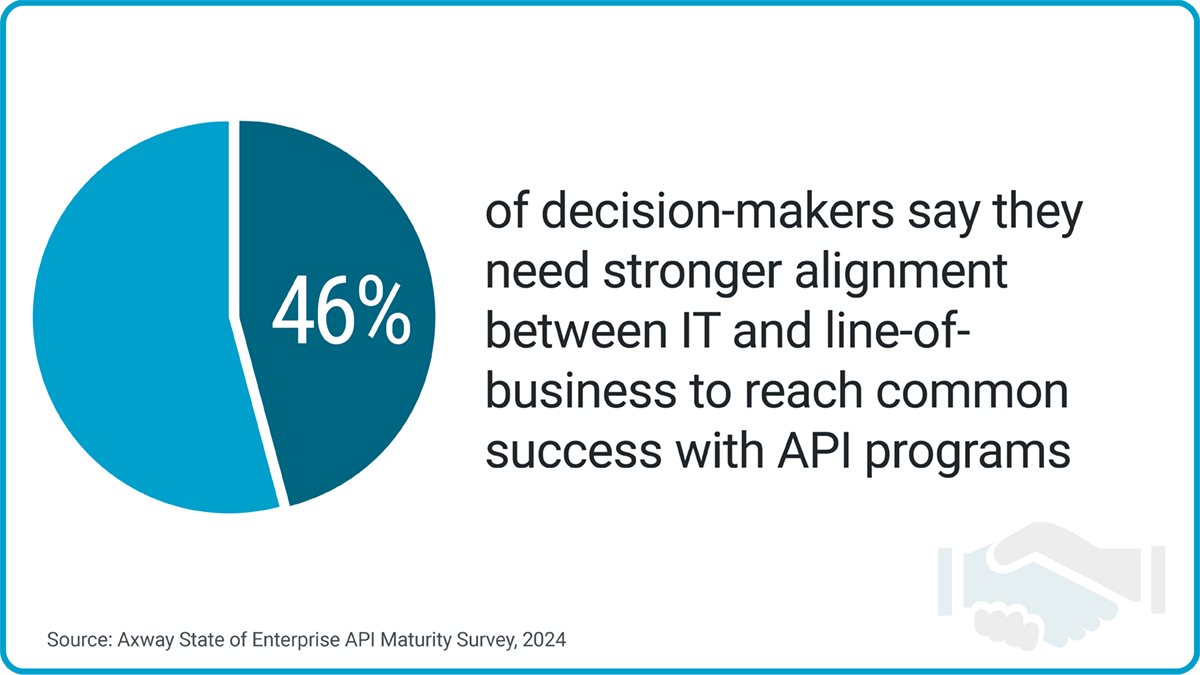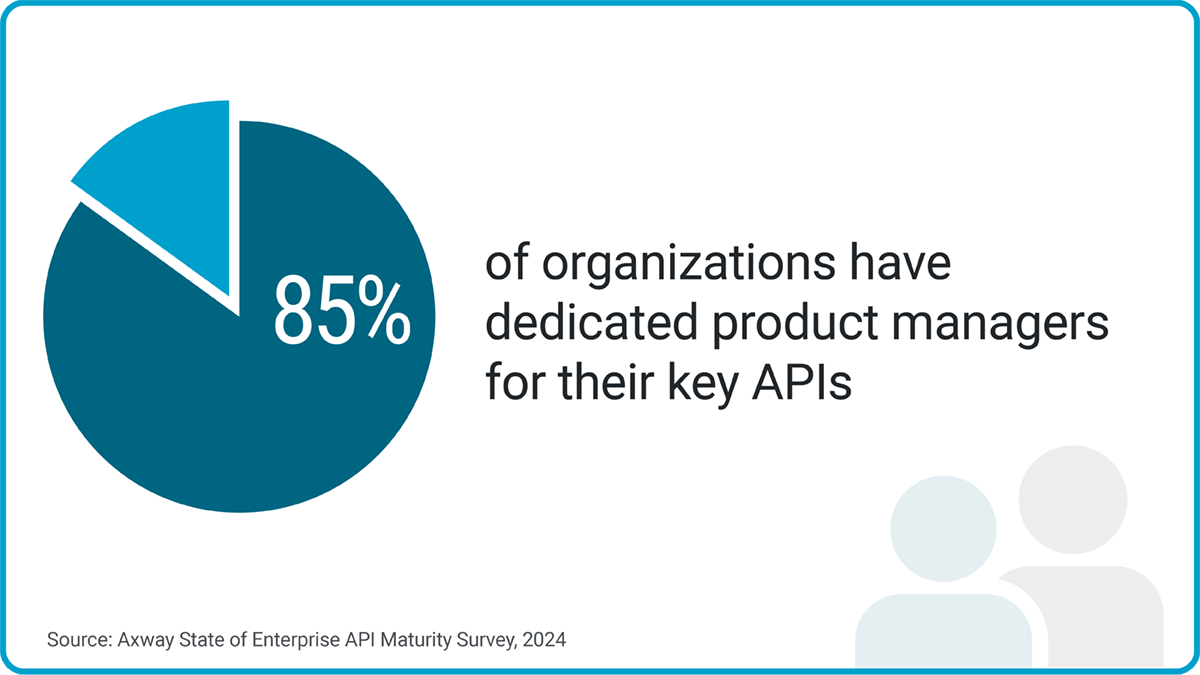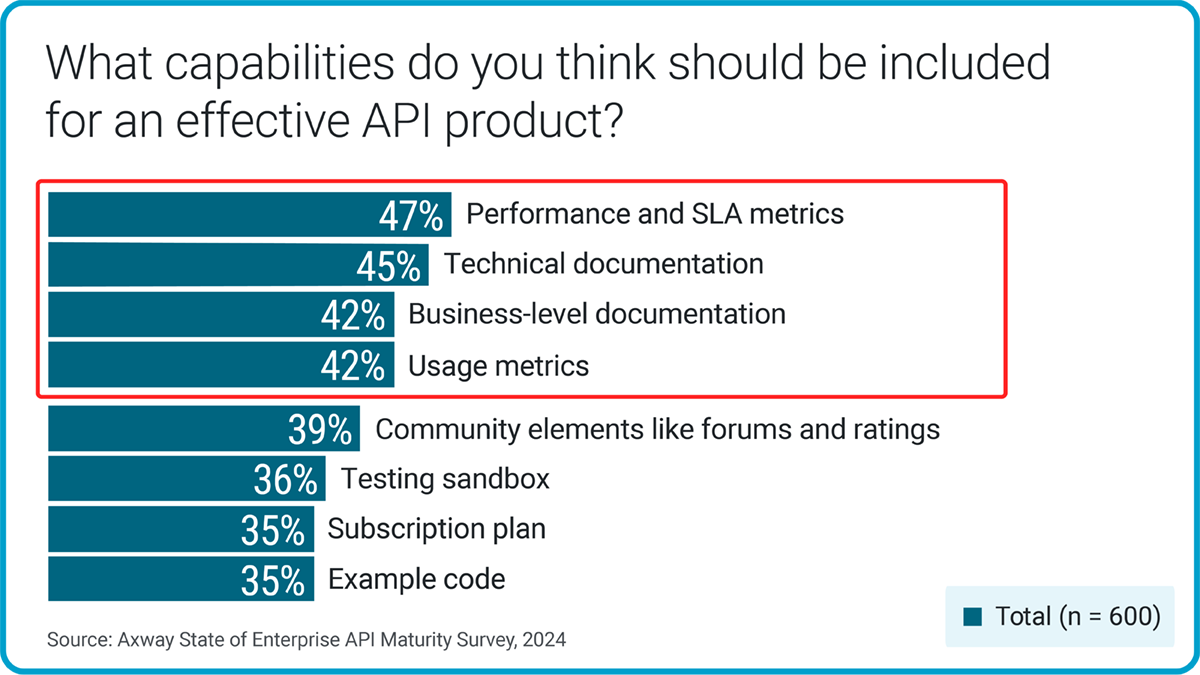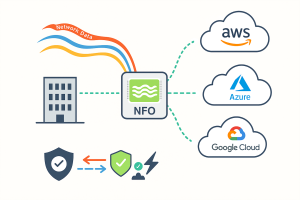The term “API products” is used frequently, but there are different interpretations. None of these interpretations is inherently “right” or “wrong.” In this post, we’ll explore the two most significant ways to think about API products and offer our preferred definition.

What Is an API Product?
An API product refers to a business-focused digital capability that is packaged and exposed as an API—whether for internal or external use. This broader view encompasses the role of APIs in digital transformation, not just the externally-facing ones. It helps us understand APIs beyond their traditional scope and see them as essential elements of an organization’s digital infrastructure.
It’s important that everyone in your organization is aligned on what “API product” means, especially when creating an API strategy. After all, alignment is key to ensuring the success of an enterprise API program.
Fact: 46% of decision-makers say stronger alignment between IT and business is essential for success in API programs. (Source: Axway State of Enterprise API Maturity Survey, 2024)
Don’t Confuse “API Product” with Externally-Facing APIs
One key takeaway from this post is to avoid equating “API Product” solely with APIs that are marketed and monetized as external products. While that is one possible approach, the majority of API products within an organization are not exposed to external consumers. Instead, they support internal business operations, so it’s essential to manage them with the same level of care and attention as externally marketed APIs.
In many organizations, APIs form parts of a larger value chain, and treating them as products, regardless of their consumer, can unlock significant benefits for digital transformation.
Two Definitions of API Products: Narrow vs. General
The term “API Product” is commonly used in two distinct ways. First, let’s examine the narrower definition, “API as a Product,” and then explore a broader, more general understanding.
YouTube link: https://youtu.be/UAoTkIbIrpM
API as a Product (Narrow Definition)
In the narrow sense, an API is managed as the product itself. This concept is easiest to grasp and often seen in examples like Twilio and Stripe, where the API is the product sold to consumers. This model has seen success for certain companies but applies to only a small subset of use cases.
However, this perspective doesn’t represent the reality for most organizations. Few businesses aim to market APIs as their primary products, so focusing solely on this view neglects a broader, more impactful approach.
YouTube link: https://youtu.be/IWq60KbrflY
A More General Perspective on API Products
We recommend adopting a more inclusive definition of “API product.” Rather than limiting your focus to APIs meant for external consumption, treat all business-relevant APIs as products—internal or external. This shift in perspective ensures that your APIs are designed, developed, and managed with a product mindset, maximizing their value to the organization.
Tip: Adopting a broader definition helps unlock the full potential of your APIs in business transformation efforts.
The Role of API Products in Digital Transformation
The value of APIs lies in their ability to package digital capabilities for easy consumption. This packaging is crucial because it allows organizations to unlock new business opportunities by making their capabilities accessible to internal and external consumers alike.
As organizations grow, managing internal capabilities through APIs becomes essential for successful digital transformation. Jeff Bezos’ “API mandate” encapsulates this idea—every capability should be treated as a product with an API, even if it’s not yet intended for external use. Narrowing your focus to external APIs misses the chance to fully leverage APIs as catalysts for transformation.
To succeed in digital transformation, treat every business-level capability as an API product. While building a catalog of API products is a long journey, the growing availability of tools like API marketplaces makes it easier than ever to create and manage API products.
Statistic: According to Axway’s 2024 API Maturity Survey, 99.5% of organizations report that APIs are part of their go-to-market strategy, signaling widespread recognition of their importance.
Key Elements of an API Product Strategy
What does it mean to treat APIs as products? Here are some important considerations:
-
API Product Lifecycle: Like any product, an API has a lifecycle—from conception and design to evolution and eventual retirement. This lifecycle needs to be managed carefully to ensure APIs meet the evolving needs of users.
-
API Product Development: Product development is an outside-in process, where APIs are developed with the needs of users in mind. This shift from an inside-out approach helps ensure that the API provides real value to consumers.
-
API Product Ownership: Every API product needs an owner to manage its lifecycle and ensure it maximizes value for both the organization and its consumers. The API product owner is crucial in steering development and maintaining alignment with business goals.
Bundling Technical APIs to Serve Business Needs
Sometimes, an API product might consist of several technical APIs bundled together to address a specific business need. This strategy ensures that the API is meaningful and delivers value. By focusing on the needs of the consumer first, businesses can create a product with clear value propositions, strong documentation, and flexible subscription models.
Survey Insight: According to the 2024 API Maturity Survey, successful API products are defined by the following capabilities:
- Performance and SLA metrics (47%)
- Technical and business documentation (45% and 42%, respectively)
- Usage metrics, testing sandbox, and community engagement (39% and below)
The Importance of an API Product Manager
To truly treat APIs as products, organizations need API Product Managers. These professionals help ensure the right product vision is maintained, manage the API lifecycle, and ensure alignment with user needs.
YouTube link: https://youtu.be/HVj6b30MpqI
The trend of appointing API Product Managers is already taking hold. According to the 2024 API Maturity Survey, 85% of organizations have dedicated product managers for their key APIs. These managers are essential for driving the cultural shift necessary to treat APIs as strategic products, not just technical interfaces.

Why API Marketplaces Matter
API marketplaces are increasingly becoming a central tool in API product management. They help API Product Managers deliver not just technical functionality but comprehensive API products, offering easy access, valuable documentation, and even community-driven features like ratings and feedback.
Learn More: Check out additional resources on how API marketplaces are transforming the API management landscape.
Wrapping Up
API products are a key component of digital transformation. By shifting your perspective to treat all APIs as products—whether for internal or external use—you can better manage and extract value from them. With tools like API marketplaces and dedicated API Product Managers, organizations are better equipped to manage their API products and drive business success.
To dive deeper into the concept of API products, check out our conversation with API expert Mike Amundsen for more insights.
About DT Asia
DT Asia began in 2007 with a clear mission to build the market entry for various pioneering IT security solutions from the US, Europe and Israel.
Today, DT Asia is a regional, value-added distributor of cybersecurity solutions providing cutting-edge technologies to key government organisations and top private sector clients including global banks and Fortune 500 companies. We have offices and partners around the Asia Pacific to better understand the markets and deliver localised solutions.
How we help
If you need to know more about what is an API product and how a product mindset helps with designing good APIs, you’re in the right place, we’re here to help! DTA is Axway’s distributor, especially in Singapore and Asia, our technicians have deep experience on the product and relevant technologies you can always trust, we provide this product’s turnkey solutions, including consultation, deployment, and maintenance service.
Click here and here and here to know more: https://dtasiagroup.com/axway/











